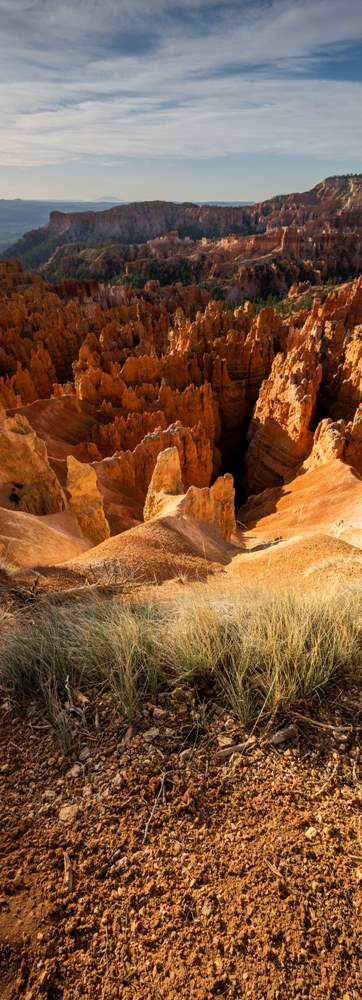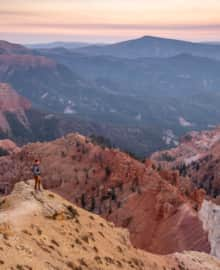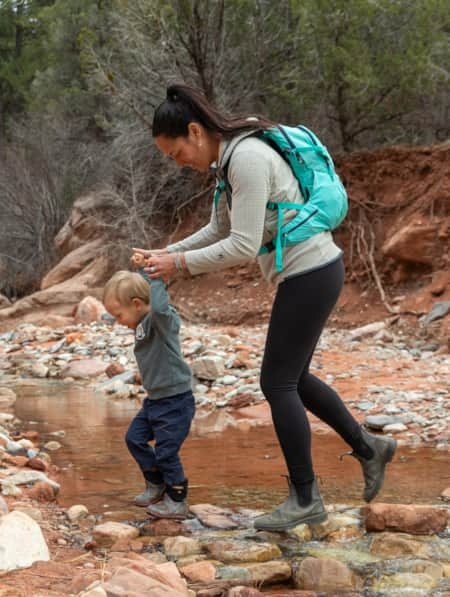
Bryce Canyon National Park
Summer Activities
-
Camping
The striking contrast between red rock and dark green forest scenery lays the foundation for a camping trip that will call you back time and time again. Explore the park’s two established campgrounds to start planning your trip.
-
Hiking
Explore a network of intertwined hiking trails that wind through high altitude forests and awe-inspiring canyon vistas. Check out The Rim Trail for an easy family hike, or gear up for a backpacking excursion on the Under The Rim Trail.
-
Horseback Riding
Something about riding through Bryce Canyon on horseback just feels perfectly right. Learn more about exploring the park with a guided tour, available to riders of any experience level.
Winter Activities
-
Photography
When you imagine Utah’s national parks, you may not imagine snow covered red rocks. Truth is, that may be when Bryce Canyon’s towering cliff walls are most stunning. Find inspiration with local tips about how to get that perfect snow-capped red rock shot.
-
Skiing
Thanks to an elevation between 8,000 and 9,000 feet, Bryce Canyon is one of few national parks where travelers can spend a day cross country skiing. Explore the Rim Trail, Bristlecone Loop, and Paria Ski Loop to get started.
-
Snowshoeing
As the snow covers Bryce Canyon’s tall pine trees, a calmness envelopes the park. Gear up with some snowshoes (which are available for rental) and venture into the park’s trails for an unforgettable day hiking.
Discover More
-

Bryce Canyon Hikes
Hiking through Bryce Canyon National Park is one of the best ways to see the park’s famous hoodoos, spires and sandstone fins.
-

Bryce Canyon Travel Tips
What’s the best time to visit Bryce Canyon National Park? What should I bring? Can I camp? Read our Bryce Canyon travel tips to find out.
-

Things To Do in Bryce Canyon National Park
Camp, hike, dine, stargaze, snowshoe and ski among Bryce’s notable hoodoos. With so many things to do in Bryce Canyon National Park year-round, narrowing down your itinerary will be hard.
Bryce Canyon Park Region Highlights
-

Anasazi State Park Museum
The Anasazi State Park Museum near Boulder, Utah is the former site of one of the largest Puebloan communities in the region. Learn more and plan a visit!
-

Eagle Point
Escape the crowds and enjoy an intimate, family-friendly skiing experience on Utah’s third-highest mountain range at Eagle Point Resort in Beaver, Utah.
-

Escalante Petrified Forest State Park
The Escalante Petrified Forest State Park is located at Wide Hollow Reservoir. This small reservoir is popular for boating, canoeing, and fishing.
-

Grand Staircase-Escalante
The allure of the Grand Staircase region — the bulk of which is contained in the Grand Staircase–Escalante National Monument — is phenomenal. Sun-drenched Utah backcountry spreads out well beyond the visible horizon from the road, whether you’re traveling along the The All-American Road: Scenic Byway 12, or on Highway 89.
-

Kodachrome Basin State Park
Kodachrome Basin covers 2,240 acres of canyon country and is surrounded by Grand Staircase–Escalante National Monument on three sides.
Nearby Towns
-
Bryce Canyon City
Right outside of the national park, Bryce Canyon City is most known as the home to Ruby's Inn, which offers lodging, camping, guided experiences, annual events, dining and a general store. This area is also a stop along the free Bryce Canyon Shuttle route.
-
Escalante
Between Capitol Reef and Bryce Canyon national parks and perched on the edge of Grand Staircase–Escalante National Monument, the town of Escalante offers access to some of the most beautiful parts of Southern Utah.
-
Panguitch
Panguitch, Utah, captures the enduring pioneer spirit of Utah with its welcoming rural charm and strong sense of heritage.
Travel Tips
-
Navajo Trail to Queens Garden is one of the best 3-mile hikes anywhere and solace-seekers should consider the 8-mile Fairyland Loop.
-
Bryce Canyon’s pristine dark skies mean incredibly starry nights. Sign up early for astronomy programs.
-
Full moon hikes mean eerily well-lit hoodoos, but don’t forget your headlamp and jacket.
-
High altitude hiking means sunscreen, hats, long sleeves and extra water.
-
The rim at Bryce varies from 8,000 to 9,000 feet.
-
Save Presidents Day weekend in February for the Bryce Canyon Winter Festival or bring your own mule for the May Mule Days.
-
Read these resources to learn how to travel thoughtfully and experience Bryce Canyon National Park most fully.
- View a downloadable map of Bryce Canyon National Park
More travel tips for visiting Bryce Canyon.
Weather
Travelers will experience the best of Southern Utah’s mountain and desert climates at Bryce Canyon. Summer visitation peaks during July’s “monsoon” season where travelers will encounter generally dry, warm weather around 80°F interspersed with dramatic afternoon lightning storms. Night dips into the 30–40°F’s. November–March are the coldest, with temperatures peaking in the 30–40°F’s and freezing at night. Because of its higher elevation, Bryce is cooler than the other national parks and carries snow longer into spring.



































